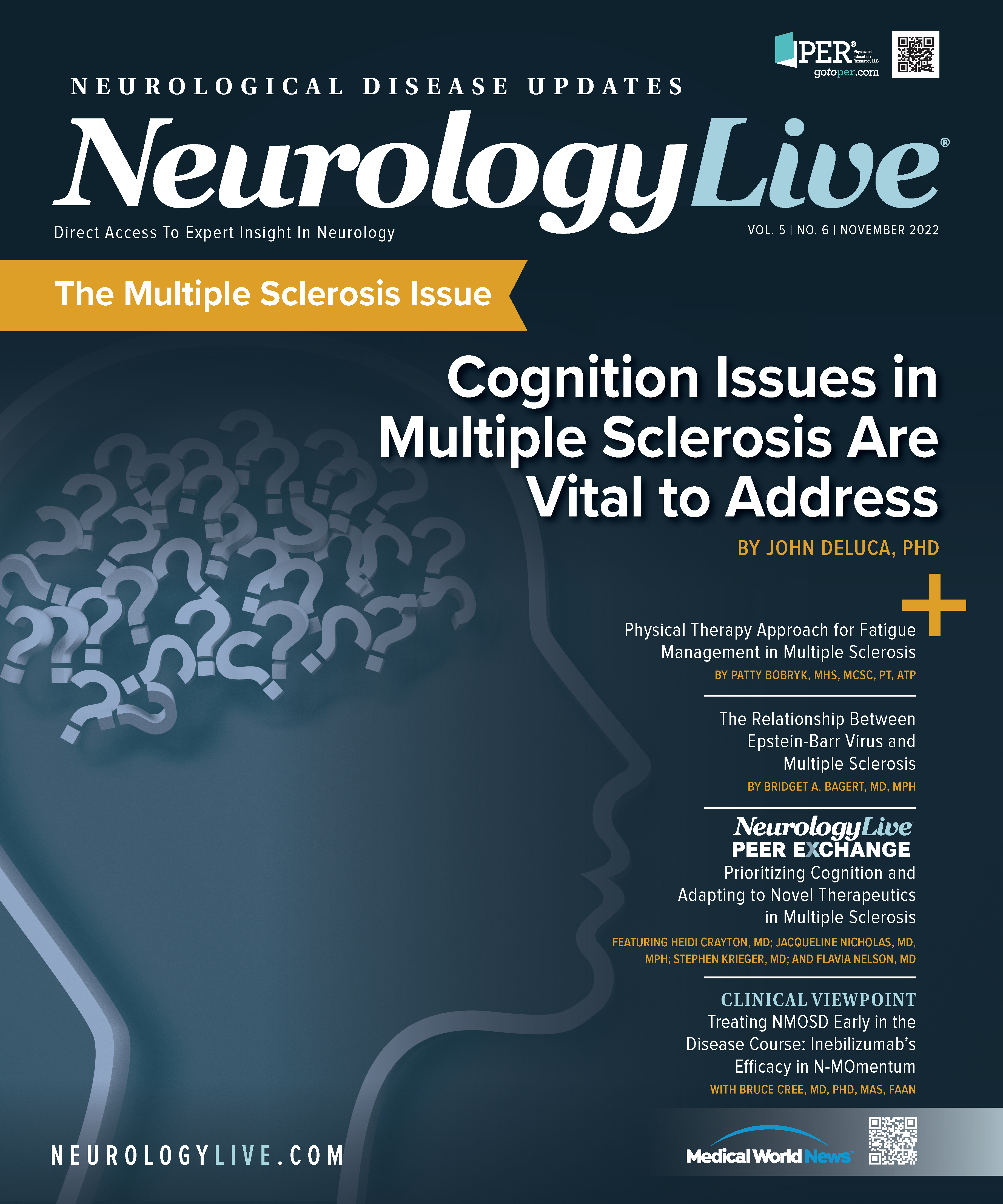Publication
Article
NeurologyLive
Ofatumumab Outperforms Teriflunomide in Newly Diagnosed, Treatment-Naïve Multiple Sclerosis
Author(s):
Consistent with the overall population, newly diagnosed, treatment-naïve patients with MS showed better relapse rates, all-cause disability worsening—including progression independent of relapse activity—with ofatumumab over teriflunomide.
Ludwig Kappos, MD

Post hoc findings from the phase 3 ASCLEPIOS I and II studies (NCT02792218; NCT02792231) showed that ofatumumab (Kesimpta; Novartis) was superior to teriflunomide (Aubagio; Sanofi Genzyme) on a number of outcomes, including annualized relapse rate (ARR) and confirmed disability worsening (CDW), among patients with recently diagnosed, treatment-naïve (RDTN) multiple sclerosis (MS).1
All told, those treated with the B-cell targeting agent had an ARR of 0.09, otherwise a 50% greater reduction than those on teriflunomide (rate ratio [RR], 0.50; 95% CI, 0.33-0.74; P <.001). Additionally, ofatumumab reduced the risk of 3-month CDW numerically by 38% (HR, 0.62; 95% CI, 0.37-1.03; P = .065) and of 6-month CDW by 46% (HR, 0.54; 95% CI, 0.30-0.98; P = .044) relative to teriflunomide.
Senior author Ludwig Kappos, MD, professor of neurology, University of Basel, and colleagues, concluded that “these findings are consistent with those observed in the overall ASCLEPIOS population and show that ofatumumab can delay disability worsening in early MS.” They added that these data continue to support the use of ofatumumab as a first-line treatment for this patient population.
Of the 1882 participants randomly assigned to treatment in the original ASLCEPIOS trials, 615 (32.7%) were RDTN (ofatumumab, n = 314; teriflunomide, n = 301), with a range of 0.1 to 2.9 years from diagnosis for both groups. As expected, RDTN participants in both groups were younger, with lower disability scores and lower T2 lesion volume at the time of the analysis compared with the overall ASCLEPIOS population. In total, 90% of participants were treated with either drug for at least 1 year, and 25% had received treatment for more than 2 years.
An additional post hoc end point observed in the RDTN population was progression independent of relapse activity (PIRA), considered in the absence of confirmed on-study relapses. Although more than half of all 3-month CDW events and 6-month CDW events that occurred in the 2 treatment groups were considered PIRA, the proportion of participants in the ofatumumab group with 3-month PIRA events was numerically lower (6.6% vs 9.1%; HR, 0.55; 95% CI, 0.27-1.11; P = .096), and the proportion of 6-month PIRA events was significantly lower (3.6% vs 7.7%; HR, 0.44; 95% CI, 0.20-1.00; P = .049) compared with those on teriflunomide.
By the end of the treatment period, ofatumumab reduced the mean number of gadolinium-enhancing T1 lesions per scan by 95% relative to teriflunomide (0.02 vs 0.39; RR, 0.05; 95% CI, 0.02-0.10; P <.001). Similarly, Kappos et al also observed an 82% difference in reduction of new or enlarging T2 lesions between the groups; however, they saw no between-group difference in annual percentage change in brain volume.
When comparing the 2 treatment groups in in year 1, year 2, and through year 2, a total of 47.0%, 92.1%, and 44.6% of ofatumumab-treated patients achieved no evidence of disease activity (NEDA) status 3, respectively, compared with 24.7%, 46.8%, and 17.7% of those on teriflunomide. Although investigators did not observe a difference in serum neurofilament light (NfL) concentration at month 3, the NfL concentration was significantly lower in the ofatumumab group at month 12 (6.60 vs 8.61 pg/mL; ratio, 0.77; 95% CI, 0.71-0.83; P <.001) and month 24 (6.47 vs 8.10 pg/mL; ratio, 0.80; 95% CI, 0.74-0.86; P <.001).
In terms of safety, both treatments had a similar proportion of patients with adverse events (AEs), as well as serious AEs. Notably, there were no reported deaths, congenital abnormalities, or birth defects for those in either group exposed to treatment during pregnancy. Neutropenia, a known risk associated with teriflunomide, occurred in 4 participants treated with teriflunomide compared with 2 in the ofatumumab group. Additionally, both groups experienced a similar rate of infections (ofatumumab, 56.1%; teriflunomide, 56.5%), with 6 participants (1.9%) in the ofatumumab group and 2 (0.7%) in the teriflunomide group experiencing serious infections.
For those treated with ofatumumab, B-cell depletion below the lower limit of normal (LLN) of 40 cells/µL was achieved in 97% of patients by week 2, which remained constant until the end of the trial. Additionally, 90% and 98% of ofatumumab-treated patients had B-cell depletion of less than or equal to 10 cells/µL by week 4 and week 12, respectively. After the last ofatumumab dose in participants who stopped treatment for any reason, B-cell repletion—levels above the LLN—was observed in 12 of 27 participants (44%) by week 24, 13 of 21 (62%) by week 36, 6 of 8 (75%) by week 48, and 8 of 8 (100%) by week 60.
REFERENCE
1. Gartner J, Hauser SL, Bar-Or A, et al. Efficacy and safety of ofatumumab in recently diagnosed, treatment-naïve patients with multiple sclerosis: results from ASCLEPIOS I and II. Mult Scler. 2022;28(10)L1562-1575. doi:10.1177/13524585221078825






